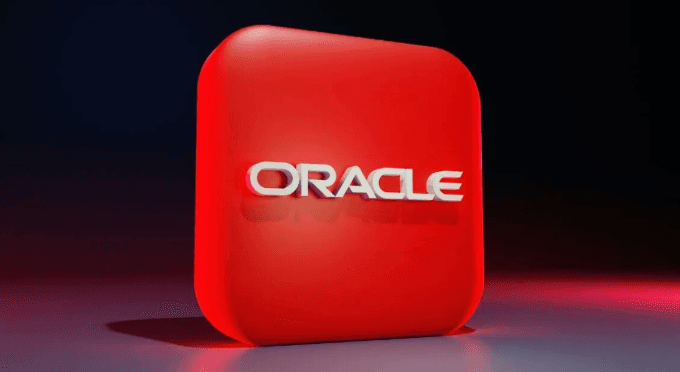How Trump’s AI Infrastructure Strategy Could Reshape the Investment Landscape


Ramping up American AI infrastructure is a top priority of the Trump White House 2.0. The administration’s “America’s AI Action Plan,” rolled out in July, seeks to strengthen the U.S. as the global leader in AI through a blueprint that focuses on:
- Leveraging private-sector partnerships with the federal government
- U.S. reshoring of AI infrastructure, with emphasis on deregulating climate rules for building data centers on federal land and expediting federal permitting (including environmental reviews) for data center and energy infrastructure projects
- Promoting U.S. AI exports to other countries
While these policies could be a boon for many American tech firms, they also open the door to catching businesses in the net of trade disputes. Also, any changes to the administration’s policies could lead to volatility for the businesses riding that wave.
Let’s dive into each policy to determine the opportunities and risks of AI investing during President Trump’s quest for global AI dominance.
Big Tech Partnerships Signal a New AI Investment Boom
Private companies are playing an increasingly large role in the administration’s ambitions for economic revitalization in American industry. In 2025 alone, the White House forged some major deals:
- OpenAI, Oracle (ORCL), and SoftBank: The $500 billion Stargate AI infrastructure project, with $100 billion earmarked for data centers, starting in Texas.
- Intel (INTC): The federal government now owns a 10% stake (worth $11.1 billion) in Intel stock.
- Apple (AAPL) and Taiwan Semiconductor (TSC): $600 billion and $100 billion investments, respectively, in American AI manufacturing and chips.
- Google (GOOGL) and Blackstone (BX): $25 billion each for data centers. Blackstone is also investing in natural gas.
- Hitachi Energy: $1 billion investment in electrical grid infrastructure.
As we detailed in our article about Intel’s deal with the White House, it’s not completely unprecedented for the U.S. government to grab a direct stake in American businesses… for example, the 2008 bailouts for JPMorgan Chase (JPM), Bank of America (BAC), Wells Fargo (WFC), and others. But it’s certainly not common practice. Then again, what about Trump’s terms are common practice?
The government’s support for investment in domestic AI infrastructure and production does give the Trump administration early momentum in its push to make America the global leader in AI.
On the other hand… there are the Trump tariffs.
Tariffs are a major part of Trump’s strategy for balancing what the administration believes are unfair trade practices. But they come with risks. Newly imposed and proposed tariffs have already shaken global trade and fueled market volatility. Most notably was the “Liberation Day” tariff announcement, which caused the S&P 500 to fall nearly 14% in the days after Trump’s speech.
Trump has also pledged to tax all semiconductor imports from companies that don’t move production to the U.S. While the exact tariff rate isn’t known, the added costs could be huge.
The Center for Strategic & International Studies estimates that tariffs could add $75 to $100 billion in additional AI infrastructure costs over the next five years… enough to prevent 15 to 20 hyperscale data centers from being built.
The issue? The U.S. is strong in exporting AI services but weak in chip manufacturing. Raising costs through tariffs without supporting exports could hurt the economy.
Of course, the motivation behind the tariffs is to increase U.S. manufacturing. But the impact of the tariffs may slow the momentum of American AI infrastructure. Consider…
- Semiconductor tariffs could add billions to infrastructure costs.
- Copper tariffs of 50% on imported copper pipes, wires, and sheets, and intensive copper derivative products like cables and electrical components, could raise construction costs by millions — considering each site uses between 5,000 and 50,000 tons of copper.
- Tariffs have already strained international trade and supply chain partnerships. And if there’s one industry that relies on a global supply chain, it’s AI. Disrupted supply chain relationships have pushed some companies to find new suppliers in lower-tariff countries.
There have been positive developments, however. Samsung, Intel, and TSM have agreed to build chip plants in the U.S., possibly in exchange for tariff exemptions.
Short term, the Trump tariffs will cost companies more to build AI infrastructure in America. Long term, they could help build a stronger domestic supply chain – if U.S. reshoring succeeds.
The U.S. Reshoring of AI Infrastructure
Reshoring – bringing manufacturing back to the U.S. – is already underway. Thanks to federal incentives and private investment, companies like Apple, Samsung, Intel, Nvidia, TSM, Micron, and AMD are building AI data centers and components in America. This is the first step toward the U.S. establishing a reliable American supply chain for advanced components. It’s also in-line with the administration’s goal of bolstering manufacturing on American soil.
A major key to the success of the Trump AI infrastructure is domestic chipmaking. The 2021 CHIPS and Science Act kickstarted the U.S. reshoring of AI by funding American semiconductor manufacturing, compelling major tech firms to build or expand manufacturing facilities.
Nvidia went all in with America when it announced it would work with its manufacturing partners to produce Nvidia Blackwell chips in Arizona. The company also announced plans to build AI supercomputer manufacturing plants in Texas. Both would be the first time these products were made on American soil. All told, the company aims to create $500 billion of American AI infrastructure over the next four years.
AI reshoring is only possible with a nationwide expansion of AI data centers, a key priority for Trump’s AI infrastructure plan. Rural America might experience the biggest boom, with large-scale AI data centers being built in underutilized areas. This seems like an ideal arrangement… job creation alone is highly appealing in rural areas where employment opportunities aren’t as abundant.
However, challenges abound…
AI data centers require astonishing amounts of power and water. And, as expected, these needs have resulted in permitting battles, community outrage and opposition, and environmental concerns.
The electricity demands of an AI data center are enough to strain power grids, which are aging and can strain under demand spikes. Residents are understandably nervous about the prospect of disrupted service and higher utility bills.
Water scarcity is also a serious concern. AI data centers consume millions of gallons of water every year for cooling purposes. In hot and dry regions of the country, water supplies are already dangerously low. With approximately two-thirds of new data centers built in these high-stress zones (Arizona, Texas, California, etc.) since 2022, droughts could be a serious problem.
Which brings us to permitting…
There is plenty of red tape to cut through — at local, state, and federal levels — to obtain permits for large projects like AI infrastructure. Lengthy environmental reviews, zoning permits, utility approvals, grid connections… these are significant hurdles and potentially costly delays the Trump administration would face in pushing forward with its plan.
But Trump possesses the power of the executive order, and he’s more than willing to use it.
Signed in July 2025, the “Accelerating Federal Permitting of Data Center Infrastructure” order accelerates the federal permitting process of data center infrastructure by streamlining federal environmental reviews, revoking Biden-era climate rules for federal land, expediting permitting by using legal exemptions, and designating projects for fast-tracking.
As expected, there’s been pushback from politicians, environmental groups, and local communities. But the administration presses on.
If this opposition leaves potential partners and investors wary of American AI reshoring, the White House is offering policy incentives to put that trepidation to rest.
- Financial backing for “Qualifying Projects,” in the form of loans, grants, tax breaks, loan guarantees, and more
- Faster permitting
- Access to federal land
- Programs to boost AI exports
- Workforce development in high-demand fields like electrical and HVAC
Is the U.S. reshoring of AI infrastructure worth the effort? Let’s look at both sides of the argument.
The Trump administration is aggressively pursuing reshoring for a few reasons:
- To strengthen America’s position in the AI race with China
- To bolster national security
- To build a reliable U.S. AI supply chain and domestic manufacturing
- To reinforce industrial policy through legislation, tax credits, financial incentives, and grants
But AI reshoring poses several challenges. Exorbitant production and labor costs when compared to foreign sites, the lack of a properly trained workforce needed to manage AI systems and operate automated data centers, supply chain issues caused by American reliance on raw materials from foreign sources, and the overwhelming water and energy consumption that stresses power grids and increases water scarcity.
Reshoring is happening… whether it succeeds depends on how markets respond. Investors will be watching closely.
Promoting U.S. AI Exports
Part of the White House’s overall AI action plan, the American AI Exports Program, coordinates government support for industry-led AI export packages to allied countries. Some of the program’s key components are:
- Full-stack technology packages: Rather than exporting individual AI components, the government’s AI plan supports the export of full-stack packages – which include hardware (chips and servers), data systems, AI models, applications, and cybersecurity – to ensure that allied nations adopt the entire American technology stack.
- Strengthened export controls: The government’s AI plan also includes expanded export controls, primarily targeting AI-enabling technologies, to prevent adversaries (like China) from accessing sensitive tech.
- Government-backed financial support: The federal government will offer financial support for selected export packages through various mechanisms. This can include direct loans, loan guarantees, credit guarantees, equity investments, and technical assistance are offered for select export packages.
- Industry-led consortia and proposals: The Secretary of Commerce will solicit proposals from an industry-led consortium, requiring solutions for hardware, cloud infrastructure, AI models, cybersecurity measures, and other applications.
- Promoting American standards: The export policy also seeks to promote American AI development and manufacturing, strengthen global alliances through U.S. governance models, and position America as the world’s technology leader.
There is some real investment potential here. Focusing on the export of American AI technology should present U.S.-based tech businesses with opportunities for new international markets. This theoretically creates more avenues for increased revenue, stronger partnerships with American allies, and long-term value creation for shareholders.
Plus, the Trump administration can continue pushing for American standards in global debates concerning AI rules and regulations. Given the president’s affinity for leaders – both globally and specific to business – who align with his ideologies and policies, it stands to reason that those leaders and businesses would likely be afforded benefits such as procurement preferences and facilitation of trade. Those are the companies investors should keep an eye on.
On the other side of the coin, countries importing American-made AI full stacks or components will likely encounter rigorous reporting and compliance requirements, especially concerning export controls. Tighter security provisions as well as end-user screening can lead to higher operational costs and lower profit margins.
Monetization of export controls is something to watch as well. Nvidia and AMD agreed to a deal with the White House in August. The two semiconductor titans will now fork over 15% of their revenue from certain advanced AI chip sales to China just to secure export licenses.
Without that deal, the Trump administration likely would have prevented Nvidia and AMD from exporting their AI chips to China. Needless to say, the 15% White House cut was the more appealing option. These types of export control deals (ethical concerns aside) present added risk to investors because the deals are simply inconsistent in nature. The policy uncertainty created by some companies facing export restrictions and others cutting deals with the federal government encourages market volatility that should give some investors pause.
Smaller tech companies may also suffer from President Trump’s support for the tech giants. While some Big Tech companies will benefit from government backing, emerging businesses could be left in the dust. At a time when America should be encouraging AI competition and spurring innovation, this tactic may result in the opposite outcome.
Put simply, the administration could very well be giving an advantage to the large firms that already have plenty of advantages. So far, it would seem the administration feels that’s a fair trade-off to claim AI dominance.
Finally, with the U.S. government pushing for global adoption of American AI standards, partnerships and alliances may suffer. Several countries have already established regulations pertaining to AI, data privacy, and national security. If those countries push back on the American standards, or the U.S. attempts to impose its will by forcing them upon those countries, friction and potentially lost export opportunities are likely to be the results.
We covered this a bit in our report on the White House/Intel deal. As these firms become more engrained with the federal government, they risk being viewed as extensions of it, and could be pawns in any trade disputes.
Other Risks and Opportunities to Consider from the Trump-led Infrastructure Wave
Perhaps lost amid the push to establish a strong AI infrastructure in the U.S. are some of the less-visible risks embedded in the White House’s AI plan. These include:
- Misinformation from politicized AI systems
- An executive order titled “Preventing Woke AI in the Federal Government” mandates that large language AI models used by the government must be “ideologically neutral.” The definition of “neutral” is left to interpretation, however, which means companies may be forced to build AI models that only consider what the Trump administration deems “neutral.”
- The same EO removes all DEI considerations… and any references to “misinformation," which could cause misleading and inaccurate AI outputs.
- AI-powered disinformation may now become more rampant as the safeguards to flagging misinformation are removed.
- Lack of accountability and oversight
- By removing the “red tape” of regulations, which were installed to protect against dangers such as algorithmic discrimination, the public becomes exposed to those risks.
- Little to no state-level involvement
- The White House seeks one federal regulatory standard for AI and is pushing to limit, or altogether eliminate, states from passing their own AI regulations.
- Compromise of data privacy and security
- Trump’s AI plan offers little to no direction on data privacy regulation. That could lead to weakened consumer privacy protection since personal data is a vital piece used for training AI models.
- While cybersecurity is noted in the AI plan, the speed at which the administration wants AI systems deployed may result in collateral damage, such as less testing for vulnerabilities.
While the White House’s AI plan certainly comes with risks, it also affords the country with some exciting opportunities that support strategic goals.
- Innovation acceleration: The mission to create a domestic infrastructure powerful enough to support advanced AI development is admirable. If successful, the U.S. may become the global leader in artificial intelligence, if it’s not already.
- National security: The Trump administration often positions AI infrastructure as a matter of national security. By establishing and strengthening the American infrastructure, the U.S. grows more self-sufficient and less reliant upon foreign materials and services.
- A prosperous economy: A strong investment in American AI infrastructure brings the prospect of economic growth spurred by thousands of new manufacturing, technology, and construction jobs.
- A highly skilled workforce: America’s AI Action Plan emphasizes the education and training of a strong workforce that can ably support the new AI infrastructure.
President Trump’s AI Action Plan leaves AI investors with plenty to consider and monitor. As the plan gradually unfolds and American AI advances are made, market performance should come into clearer focus. In the meantime, we’ll all watch with anticipation to see whether the White House’s American AI plan comes to fruition.
Regards,
David Engle
Editor’s Note: With AI’s huge impact on investing, businesses around the world are trying to determine how to best leverage AI to impact their bottom line. Even hedge funds are using AI to launch funds designed to beat the market.
Stansberry's Investment Advisory editor Whitney Tilson has leveraged the power of AI as well… to create an AI-driven, fully allocated model investment portfolio known as the New Engine of Wealth (“N.E.W.”) System. Get a close look at Whitney’s N.E.W. System, and learn how to assemble the optimal portfolio, in his free presentation.



